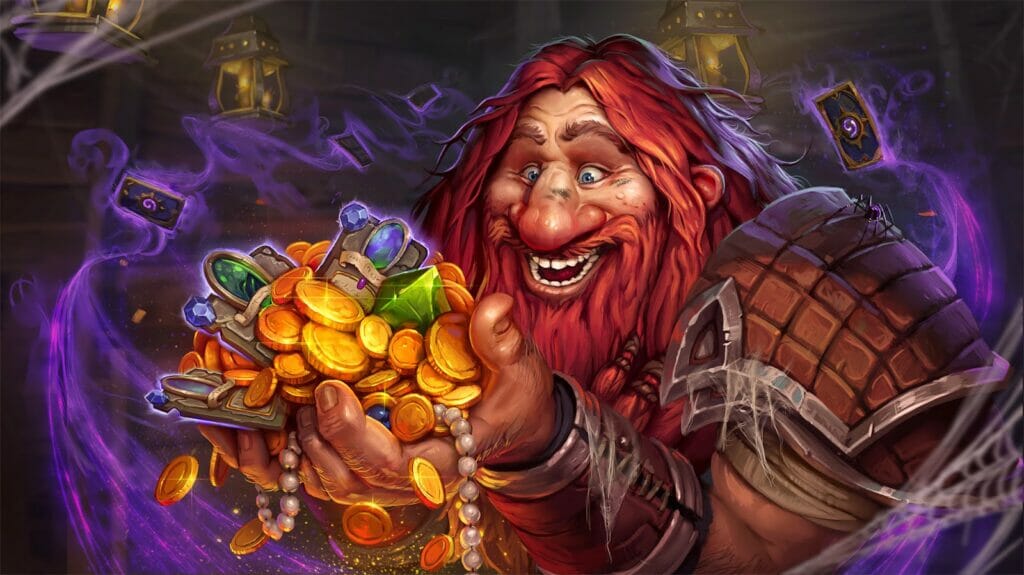
HearthStone is a card game that has received the recognition of millions of gamers worldwide.
Since its introduction in 2014, Hearthstone has become the best game in its genre, keeping up with its direct competitors, Artifact and Gvent. HearthStone currently hosts many different tournaments, ranging from the official ones at BlizzCon to the underground ones that take place at various indie venues. Hearthstone is inferior in daily use too many games, such as Dota 2 or League of Legends, but despite this, it has its own huge audience. In this article, we will consider the topic of interest to many players, what HearthStone tournaments are, and where they are held.
What You Need to Know About HearthStone Tournaments
Before starting your analysis of what you need to know about Hearthstone tournaments, you should find out whether they exist at all and whether the Blizzard card game is part of eSports.
You should also figure out what system the championships are held in and the selection of gamers for the annual BlizzCon event.
After the release of Hearthstone in 2014, many players switched to cards in order to fight one on one against their opponents. It is worth recognizing that the era of team games has become obsolete. First of all, because of the difficulties in communication between team members and the inability to complete the game alone. Hearthstone completely solves this problem, and here it remains only to rely on the mechanics of randomness and not on his team. Already from the very appearance, many users of the novelty arranged various tournaments in which they measured themselves. You can check PlayScore websites, where you can find the score of the best players in the game.
By now, we all know that HearthStone is a fairly random game where even a child can defeat an opponent. Everything went in the direction of simplification, hundreds of guides appeared on the Internet for various decks, and the game itself offered to buy a set of cards or go through a new adventure for real money. Thus, it can be understood that becoming successful in XC is quite simple; it will only take time.
If we consider in more detail the question of what championships and competitions are, then we can clearly divide them into two types:
- Official (those tournaments that are held under the auspices of Blizzard, such as BlizzCon).
- Supported by renowned organizations such as DreamHack, StarLadder, etc.
- Taking place on various indie sites (these, in turn, are those tournaments that are held by various sites and just enthusiasts who want to measure their strength on the battlefields in Hartstone).
- As well as the World Championship Tour, in which players from all over the globe fight.
To successfully follow the emergence of new tournaments from Blizzard, you need to follow the link and save it in your browser bookmarks. Now Grandmaster and Master Tour tournaments are being held in which 250 thousand dollars are played, and for the first place, the winner will receive 500 thousand green banknotes. You can sign up for the tournament by clicking the “Participate” button in the upper right corner of the site; it is highlighted in blue. The butterfly website will open in front of you, where you can register.
Basic concepts
If we talk about the basic concepts of what Hartstone tournaments are, then we can say that there are a great many of them. It would seem, what is the catch? We find any free tournament, register and go ahead – defeat our rivals. However, not everything is so simple: let’s start with the fact that there are not so many free competitions that are consistently held.
For example, at present, there is one free and reliable tournament in which you can be one hundred percent sure that it will pass and everything will be of the highest standard. These are tournaments from nuts bet, but the number of participants there is quite large, and the prize pool is very small; if you are limited in time, it will not suit you.

Therefore, we recommend using free tournaments only as a so-called starting platform: play a couple of times, decide on the pros and cons of your line-up, and start playing paid tournaments – they bring much more income if you win, and they take much less time. It is worth noting the available tournaments and their variety, which we will talk about later; they are divided into the following types:
- Tournaments with interesting mechanics;
- Blitz tournaments;
- Multi-stage tournaments.
Further, tournaments should be considered in more detail, taking into account the specifications and lists of tournament sites. The action plan will be built as follows:
- Types of tournament brackets;
- Types of class peaks;
- FAQ;
- List of tournament sites;
However, it is worth mentioning the tournament formats. Tournament games are divided into the following modes (types):
- Сonquest. The conquest mode implies that the winners of the previous game must change the deck, and the opponent has the opportunity to leave the one he played earlier.
- Last Hero Standing. The opposite mode of the previous one stands for “Last Hero Standing.” Assumes that the winning hero must keep the deck he won, and the loser must change it.
- Strike. In this game mode, not classes are banned, but matchups. For example, Mage vs. Warlock, etc. The next step will be the production of bans by two players; the system automatically shows which deck you and your opponent should play.
Tournament Draw Types
One of the main organizational moments of any tournament is the construction of tournament grids, through which players will confront each other. Hearthstone is a young online game with only five years of experience in the esports scene. If you pay attention to the design and further construction of tournament grids, then the organization of many championships and competitions in Dota 2 and CS: GO comes to mind. Of course, these are different games, but the competitive grids in Dota and CS have been thought out for years and have been successfully operated for ten years. Let’s take a closer look at each of the currently available tournament types.

- First of all, it is worth noting the fights in the BO-1/3/5 formats. The abbreviation BO means abbreviated from English. (Best Of), the number of duels (cards) that opponents will play against each other.
- Next, you need to consider the order of holding and the distribution of players on the grids according to the matches played.
- Single elimination. The game is played until one defeat. In case of loss, the player is eliminated from the tournament.
- Double elimination. A more forgiving system is completely taken from Dota 2. Fighting using the double emission system, a player who loses his BO-1/3/5 falls into the lower loser bracket. In the Loser Bracket, the player will have to fight in the Bo-1 format until the first defeat; in case of loss, the player leaves the tournament.
Bo3 (5,7) stands for best of 3/5/7. When fighting in the Bo3 format, you need to win twice in order to defeat the opponent. Therefore, it is possible to lose only once. Following the above algorithm, the sequence of actions for more matches becomes clear.
Types of Class Peaks
There are wide varieties of picks of different classes in tournaments; the most common ones are presented below:
- Blindly. There is no information about the classes of the opponent; you have to choose blindly for further combat.
- Simultaneous Peak. Simultaneous selection of decks and classes is also carried out blindly, with one exception: you receive information about the choice of an opponent after his pick. This procedure is carried out with the help of third-party services.
- In turn. A classic draft in which opponents alternately choose and ban classes and decks.
Below are some introductory notes for a clear understanding of the actions during battles in tournaments and the identification of different teams.
- Check-in – a command that allows you to determine the readiness of the player to play the tournament.
- Line-up – decks that you scored during the picks and bans.
- Meta – statistics of decks and classes on their effectiveness and stability at the present timeю













